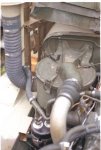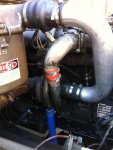treeguy
New member
- 605
- 3
- 0
- Location
- Fort One Bay - Cape Cod, MA
I'm on both sides of the fence on keeping the fuel kill out while the truck is off. I thought it was a good idea except for the linkage spring being under constant pressure. But somewhere I heard that keeping it pulled out could harm something in the fuel pump (not sure what, this just sticks in the back of my mind)
If routed to the exhaust is it necessary to have the "SCAVANGING" valve? Is the exhaust pressure going to be so great to overcome the exiting air pressure and force or halt the slobber gasses? Just thinking. The crank case gas pressure probably increases in ratio to the increased exhaust pressure at increased rpms.
If routed to the exhaust is it necessary to have the "SCAVANGING" valve? Is the exhaust pressure going to be so great to overcome the exiting air pressure and force or halt the slobber gasses? Just thinking. The crank case gas pressure probably increases in ratio to the increased exhaust pressure at increased rpms.




 something that a lot of people do not understand
something that a lot of people do not understand 
